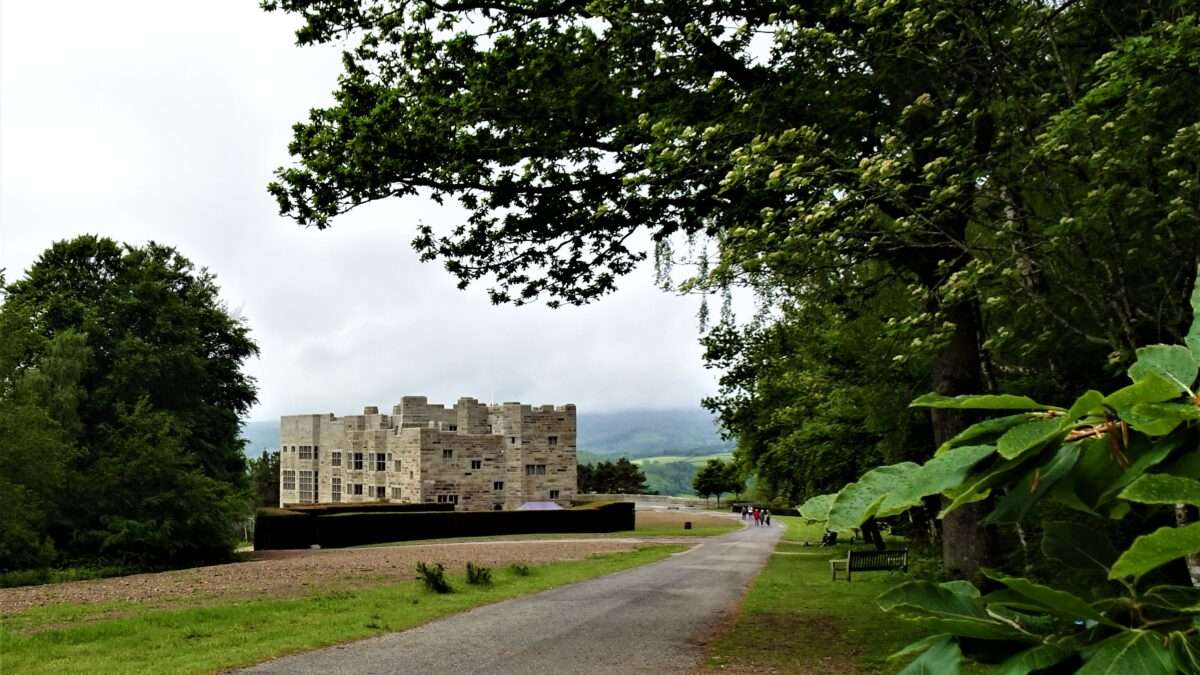‘It looks like you can go inside,’ I said to Mr Word Loft after perusing a relative’s social media post with appealing photographs.
Castle Drogo was a place we visited a few years ago when it was scarred with scaffolding, and certain rooms closed. We still had a great time but vowed to go back when restoration work was finished, but then the pandemic arrived.
Before going any further; apologies to those following my recent blog posts, and expected this one to be about the Rollright Stones from our Cotswolds holiday, but it was such a treat to go inside a National Trust property again at the weekend, I wanted to share the experience straight away.
Castle Drogo, what an amazing name? It’s thought to come from Julius Drewe’s belief that he was a descendant of medieval Baron Drogo de Teigne, the landowner of the Teign Gorge where the fortress was built on the upper slopes between 1911 and 1931.
It overlooks a steep valley, where the River Teign can be heard gushing at the bottom. Exploring the woodland and riverside walks, it was a refreshing sound whilst taking in spectacular Drewsteignton countryside and Dartmoor beyond.
Inside Britain’s latest castle, I was captivated by the lavishness of the library, drawing room, and dining room. The table is set, where the shell pink-tinted glassware is eye-catching. Collected on Julius and Frances’ honeymoon in 1890, it’s beautiful and rare.
Historical items on display in the servants’ quarters are enthralling, offering an insight into the workers’ lives and occupations. From the butler’s room, with accommodation beside it, to a room dedicated to repairing, containing sewing machines, shoe repair implements, and plumbing necessities.
The wine cellar seemed to be a place for jovial remarks, but the kitchen is most impressive, housing two cooking ranges, a huge selection of moulds, with a round table set under an ornate circular skylight – the area is below ground level.
Through an arched passageway to a small verdant garden, the chapel is located. I wondered what the bell sounds like as we gazed up at the tower, as it seems quite large for a small chapel. Inside, the walls are curved around the altar, the organ a museum piece, and an exhibit of christening wear by the font are fascinating.
Like all noble ancestral homes, there are ornamental gardens. These have stone stairways to and from terraces, and the flowerbeds are stocked with a mixture of wildflowers and more formal plants, such as roses and lavender.
Being rhododendron time of year, the shrubs were in full bloom and in hues I haven’t seen before. The phrase ‘a blaze of colour’ is a perfect description for the orange, yellow, pink, red and purple blossoms.
Leaving the pathways, we came across a glade by the croquet lawn where a Bunty House was nestled. These days it is known as a Wendy House. A crazy paving path with London Pride growing cloud-like from the borders leads through the tiny garden. The front door is closed, but we know from the past that there is a table and chairs inside. A delightful place for children to let their imaginations run free, just as mine had in the castle set in its tranquil surroundings.
Until next time.
Sue. X

